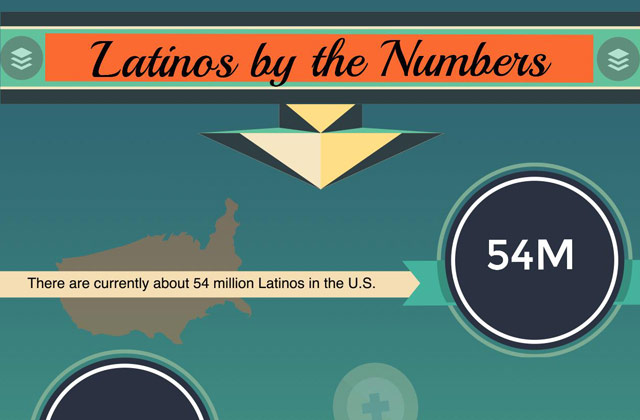Written by the Puerto Rican mother-daughter team of Idelisse Malavé and EstiGiordani, the new book Latino Stats: American Hispanics by the Numbers" does just what its title suggests: It explores the lives of Latinos through numbers and dispels popular myths.
For example, most Latinos aren’t immigrants–and most new immigrants aren’t Latino. But too often, Latinos are defined by this topic (that and food; remember that salsa replaced ketchupas the No. 1 selling condiment nearly a quarter century ago!).
Colorlines illustrated some of the book’s stats and spoke with Malavé about its sometimes-surprising findings:
Where Latinos live
One in six people in the United States is Latino, but 2/3 live in just five states: California, Florida, Illinois,New York and Texas. But according to "Latino Stats," Alabama, Kentucky, South Carolina, South Dakota and Tennessee have seen the fastest Latino population growth since 2000.
Latinos at the voting booth
Cuban voters only represent about five percent of all Latino voters but they draw a lot of attention because of their perceived conservatism in the swing state of Florida. But there there’s a catch. "Ten years ago, about 2/3 of Cuban voters were Republican–and now it’s down to 47 percent," says Malavé. "The number who identify as Democratic [doubled] from 22 to 44 percent." Malavé also notes that Latinos will make up 40 percent of the electorate by 2030.
Latinos at the movies
"We like to go to the movies, we like to go in groups, and we like to talk about the movie afterwards–it’s one of our preferred activities," says Malavé. But that love doesn’t translate to films about Latinos. When they do appear on the screen, they’re often playing a stereotype. Says Malavé,"The top three roles are gang member, gardener or maid."
Latinos and money
Latino weekly earnings average about $200 less than that of all American workers. And there’s a gender gap here, too. "The lowest average weekly earnings [are] for Latina women, who get $521 a week," explains Malavé. "Latino men come in at second lowest at $592.
Latinos in K-12
One in four public-school students is Latino. But they tend to be educated by teachers and leaders who don’t look like them. "Most Latino children are in schools where the teachers, who are predominantly white, are the youngest, most inexperienced and have the least access to resources," says Malavé.
